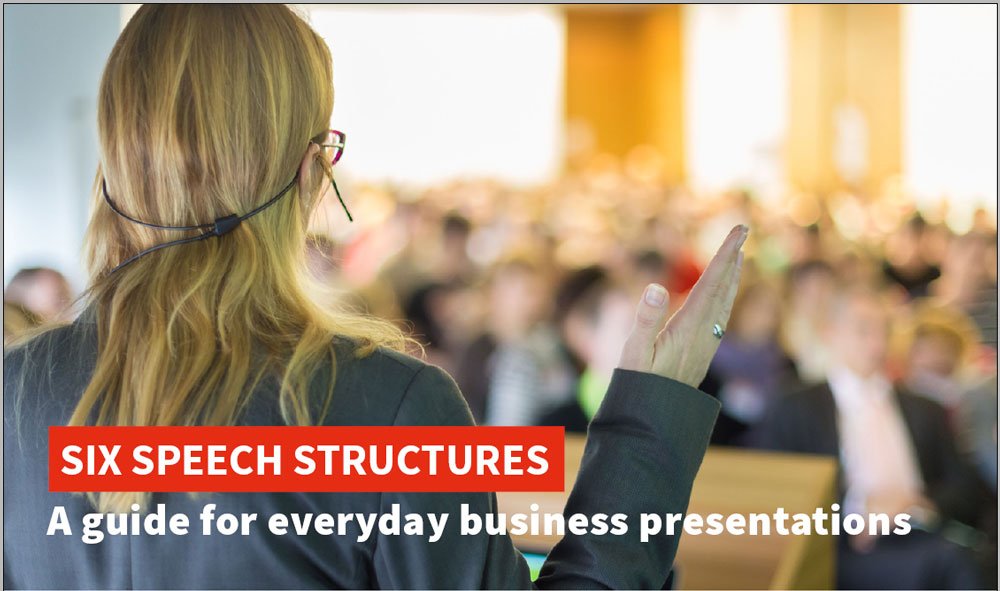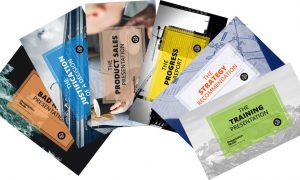PowerPoint vs. PDF: Which Is the Best Way to Deliver Your Presentation?


[This article contains affiliate links. For more information, see our disclosures here.]
Giving a presentation is a daily occurrence for many of us. From travelling sales people pitching in high pressure environments, to teachers imparting knowledge in a fun way to children, presentations are vital to communication. Millions are taking place each day.
Although PowerPoint might immediately spring to your mind when a presentation needs to be created, it isn’t the only way to tell your story. Many business people and speakers prefer to go down the PDF route, creating their slides in a programme like PowerPoint, but then ditching it before the presentation begins.
For years, clients and colleagues of all the PowerPoint presentation design agencies I’ve been involved with have been asking for my opinion on what is the best method to use when standing up to present; PowerPoint or PDF?
Although I’m very much in the PowerPoint camp when it comes to designing a winning presentation, I thought it would be helpful to weigh up the benefits each method possesses over the other in terms of presenting.
The benefits of presenting with PowerPoint
Razzmatazz
Not a word I use lightly. PowerPoint trumps PDF delivery in all aspects of attention-grabbing. With PowerPoint, animations can be added within slides, 3D models can come alive, and morphing techniques can be applied between different slides to add a lot of visual interest.
Transitions
PowerPoint allows smooth and customisable transitions between slides. Not only do they add a touch of motion and visual flair to your presentations, speakers can get creative and use a transition which compliments their presentation’s theme or style. Transitions also allow on-screen content to appear at different times, creating a sense of depth and layers.
Video
A video can be added to a PowerPoint presentation as easily as an image. Video can be used in many ways and, if used right, can be extremely powerful and engaging. PowerPoint can not only play a video clip, but also allow the presenter to include looping video backgrounds which are slick and engaging.
Control
By running your presentation deck on the software in which it was created, the user has a greater degree of control when it comes to presenting. PowerPoint files can be saved in ‘show mode’ meaning they open automatically at slide one, in full screen. Features like ‘Zoom’ can also be employed to create a non-linear presentation, so the speaker can jump from section to section at will, being more flexible.
Editing
Just as with control, if your editing programme is already up and running, as PowerPoint would be if you were using it, you can fix things there and then. Say you notice a spelling error at the last minute or feel that your audience would benefit from seeing more images or stats: hop in, make your changes, and hit save. You’re good to go.
The benefits of presenting with PDF
Not everyone has PowerPoint
Let’s face it, PowerPoint might be a tool that most business professionals have access to, but it is still a paid-for service. If you find yourself having to present on someone else’s hardware, and they don’t have PowerPoint installed, PDF works brilliantly as the file format will open in just about anything; imaging software, Acrobat, and web browsers.
Security
If your presentation contains sensitive data that is intended for certain eyes only, you might want to consider protecting it with a password. PDF files can be encrypted very securely, and they can also be set to expire after a certain amount of time, with account logins providing extra peace of mind.
Font and layout preservation
Getting creative in PowerPoint might involve employing unique fonts for your slides. However, if you must email your presentation to someone who doesn’t have those fonts installed, it’ll look, well… bad. PDFs overcome this issue by preserving exactly what you intended in the original design, and no matter how they are opened, all the elements will be there waiting for you.
File size
The more complex a PowerPoint presentation, the larger the overall file will be. This isn’t usually a problem, if the file is running on a modern machine with plenty of processing power. However, attempt to run your massive presentation on an older, slower computer and there could be issues. PDFs eliminate that problem via the compression they go through when being created, resulting in a smooth-running slideshow.
Emergencies
No matter how you’ve built your presentation, or how you intend to present it, having the deck backed-up as a PDF is a great idea… just in case. Knowing you have your presentation sitting on a flash drive on your keychain will be reassuring, just in case everything goes wrong – from lack of PowerPoint software, to old, troublesome machines. Plug it in and you’re off.
So… which is it?
PowerPoint, definitely.
Well, kind of. Look, as someone who has both built and given presentations in PowerPoint for more than 20 years now, I can attest to the software’s versatility and power. Personally, I’d be heart-broken if all that hard work and effort I had put into my slide deck, adding transitions and animations, building layers of content, was lost in a PDF file.
I can appreciate that not all presentations require that level of creative involvement. However, creative elements, no matter how small, demonstrate a level of investment and commitment to the story being told that the overall effect will be more impressive. PDF really can’t convey that, not in my opinion.
Having said that, the pros I offered about presenting with PDF shouldn’t be ignored. They highlight legitimate problems that I and people I know have encountered over the years while using PowerPoint.
Essentially it comes down to this: what control do you have over your presentation?
If you are using your own laptop, screen and/or projector, and you are confident with your tech and your ability to overcome technical problems, PowerPoint all the way. It’s your machine, and it’s probably the computer on which you built the presentation in the first place, so you know it will work fine.
But if you’re in unknown territory, where you aren’t sure how you are expected to present, that final pro from the PDF list will come into play. A decently quick flash drive containing a PDF version of your slide deck (more on that below), plugged into someone else’s computer, will eliminate a lot of awkwardness and faffing about.
Converting from PowerPoint
Creating a PDF from a PowerPoint file is easy. It’s a simple case of ‘Save As…’ and selecting PDF. However, in converting to the PDF format, you will lose all your stylish transitions and animations. That might not matter to many people, especially those who are there to present hard data and stats. But if your presentation has been designed to be artistic and to show off your creativity, consider what changes could be made to the deck before you convert.
If the loss of transitions between slides negatively impacts the overall aesthetic, could something be done? Perhaps the layout and position of objects on each slide could be changed to soften those jarring slide changes that PDFs suffer from.
Don’t just convert to PDF without thinking: test how the finished file will work and play, then create another, edited version of your PowerPoint presentation and convert from that.
And for the love of God, rehearse with the new PDF presentation just as you would with your PowerPoint.
Converting to PowerPoint
If you have a pre-existing presentation saved in PDF format, but you want to convert it to PowerPoint to both edit and present with the software, things are slightly trickier. PowerPoint can’t open a PDF file and conveniently paste each page into a separate slide. However, there are programmes that can.
Adobe Acrobat DC is a solid piece of software that fans and users of PDF files might already own. Converting to PowerPoint is a relatively simple process involving exporting the file as ‘Microsoft PowerPoint’. Once done, you’ll be left with a .ppt file that can be opened in PowerPoint and edited.
A web-based and free solution is smallpdf.com. This site allows you to upload a PDF, both from your computer or from the cloud, to be immediately converted to PowerPoint. You then simply download the resulting .ppt file and open it. Despite being a free online tool, Smallpdf will preserve the editability of text and images, so you can very quickly make changes. A very similar site, and one to also try, is ilovepdf.com.
Another option to consider is Able2Extract. Although this is a paid-for piece of software, the trial version gives you enough time to convert your PDF file to PowerPoint in a similar manner to Acrobat. This link also takes you to their free online tool which is completely anonymous, without limits, quick and easy to use. That way you can try Able2Extract’s PDF to PowerPoint without even downloading the free trial of the software. Open the PDF, export to .ppt, and once the file is ready, fire up PowerPoint. Then you can begin editing and adding some of that razzmatazz I mentioned earlier.
And so…
PowerPoint might be the most powerful and versatile way to present a story, but it’s important to remember that the presenter is as unique and as individual as the stories being told. Each of us needs to find our own way of presenting. As much as I champion it, I’m glad that there are options other than PowerPoint when it comes to sharing our ideas. Find the one that suits you best.













